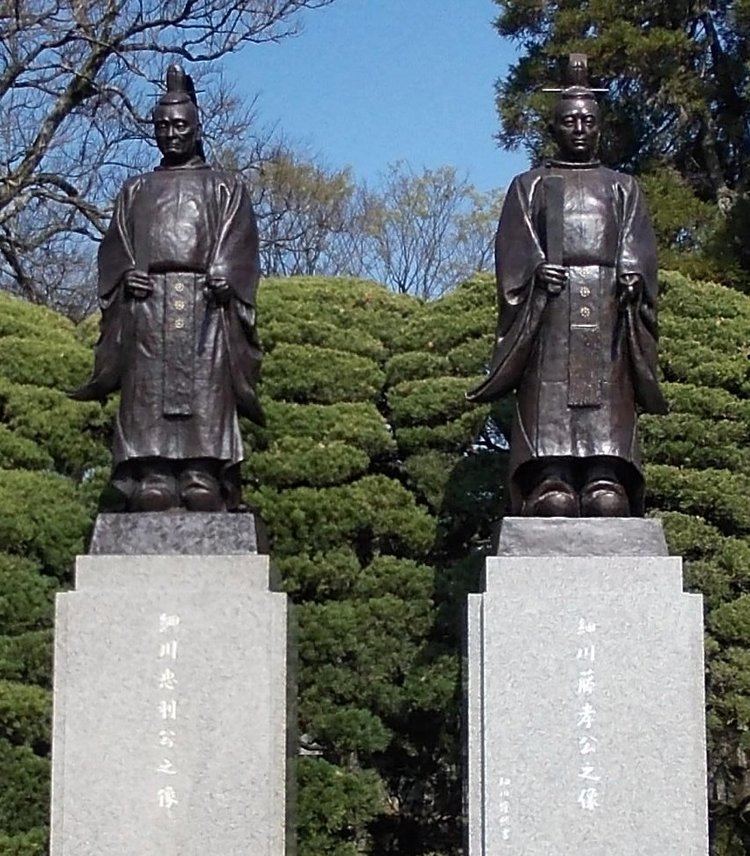Name Hosokawa Fujitaka Children Hosokawa Tadaoki | ||
 | ||
Similar People | ||
Hosokawa Fujitaka (細川 藤孝, June 3, 1534 – October 6, 1610), also known as Hosokawa Yūsai (細川 幽斎), was a Japanese samurai daimyō of the Sengoku period. Fujitaka was a prominent retainer of the last Ashikaga shoguns. When he joined the Oda, Oda Nobunaga rewarded him with the fief of Tango. His son, Hosokawa Tadaoki, went on to become one of the Oda clan's senior generals.
Life
After the Incident at Honnō-ji in 1582 Fujitaka refused to join Akechi Mitsuhide for the Battle of Yamazaki despite the fact that his son, Hosokawa Tadaoki, was married to Akechi's daughter, Hosokawa Gracia. Fujitaka shaved his head in the Buddhist tonsure, changed his name to the priestly "Yūsai", and delegated his status as daimyō to Tadaoki. However, he remained an active force in politics as a cultural advisor, under both Toyotomi Hideyoshi and Tokugawa Ieyasu. Hideyoshi granted Fujitaka a retirement estate worth 3,000 koku in Yamashiro Province in 1586, and added another 3,000 koku in 1595.
Ishida Mitsunari had asked Fujitaka to join the Western Army, but Fujitaka refused due to one of Ishida's schemes which resulted in Gracia's and his granddaughter's death. As a general in the Eastern Army, he garrisoned Tanabe Castle with around 500 soldiers. When Tanabe Castle was besieged by the Western Army, the general commanding the siege had great respect for Fujitaka. Because of this, the attack lacked the usual spirit involved in a samurai siege: the attackers amused themselves by shooting the walls with cannons loaded only with gunpowder. Fujitaka laid down arms only after an imperial decree from Emperor Go-Yōzei. However, this was 19 days before Sekigahara, and neither he nor his attackers were able to join the battle.
Fujitaka was buried in Kyoto, but has a second grave in Kumamoto, where his grandson Tadatoshi ruled.
